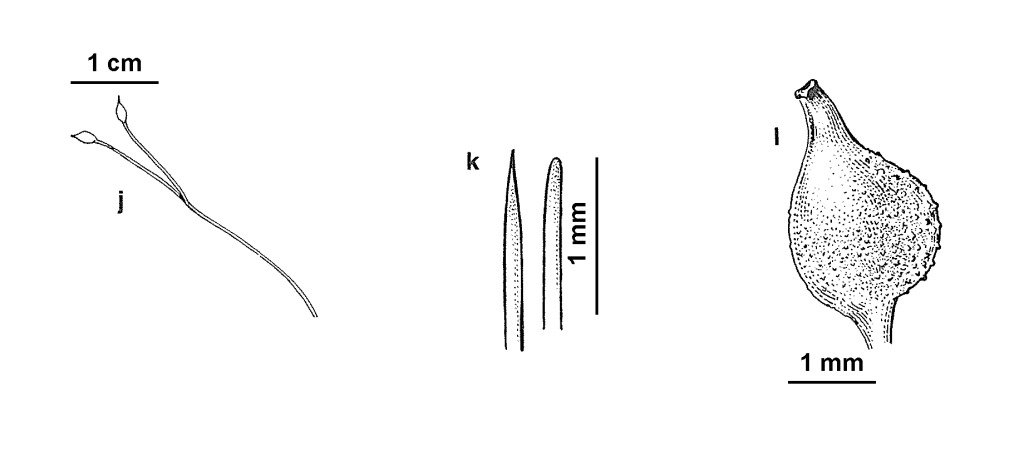Ruppia
Annual or perennial herbs. Leaves with basal sheath open, ligule absent, auricles present; lamina linear; apex subtruncate, entire or notched. Inflorescence a 2-flowered spike, initially enclosed by 2 subopposite leaves; axis becoming extended such that spike emerges either on a short stiff axis (submerged-flowering species) or on an elongated axis which reaches the water surface (surface-flowering species). Anthers 2; pollen reniform; carpels (2–)4–12(–26); initially sessile or subsessile, sometimes becoming stalked in fruit. Infructescence of surface-flowering species withdrawn by the contraction of the coils of the fruiting axis. Fruit with inner hard tissue remaining, usually falling with stalk attached.
4 species; 1 cosmopolitan and 3 confined to Australasia, all occurring in Victoria. Positive identification of Ruppia species can only be achieved if fruiting material is available.
Conn, B.J. (1994). Potamogetonaceae (including Ruppiaceae). In: Walsh, N.G.; Entwisle, T.J., Flora of Victoria Vol. 2, Ferns and Allied Plants, Conifers and Monocotyledons, pp. 147–155. Inkata Press, Melbourne.
 Spinning
Spinning



